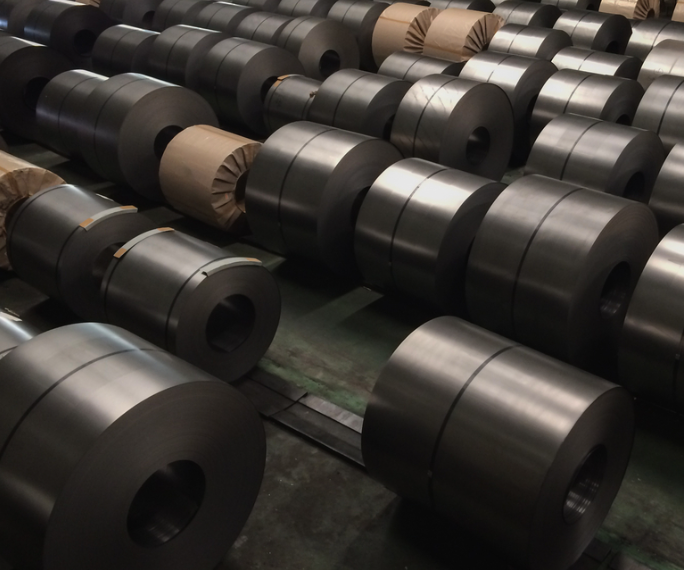Introduction
Steel is one of the most important parts of modern society, and as one of the most important materials for engineering and building, it is used in many parts of our lives. At the moment, the steel industry is one of the three industries that make the most carbon dioxide. So, steel companies all over the world are facing a growing decarbonization challenge to reduce their carbon footprint from both an environmental and an economic point of view.
India is the second-largest steel producer in the world right now. India’s National Steel Policy from 2017 says that they want to triple production by 2030. Several studies show that by 2050, the amount of steel used could go up by many times. India’s steel production will go up a lot over the next few decades to keep up with rising demand at home and around the world.
If we want to keep global warming to between 1.5 and 2 degrees, we will have to take big steps toward net-zero carbon emissions in the next 10 to 20 years. To meet this challenge, we will have to change almost every part of our modern lives. India promised to become net-zero by 2070 at COP 26 in Glasgow, which just ended. About 7% of greenhouse gas (GHG) emissions come from the steel industry, and every tonne of steel made usually releases 1.85 tonnes of carbon dioxide. The steel industry has a big part to play in keeping this promise. Even though it is important for economic growth, the iron and steel industry uses a lot of energy and resources. Rapid growth in India’s need for steel will have big effects on energy, the environment, resources, and the economy. Today, the iron and steel industry uses more energy than any other industrial sector. Because of this, it is very important for the steel industry to come up with and use new technologies that use less energy.
Most of the carbon emissions from steel plants can be taken directly from their process-gas and off-gas. This makes them good candidates for carbon capture. This captured carbon can be sold back into the market, allowing producers to keep their costs low while making big steps toward global net-zero goals, or it can be put away in a safe place for the long term. CO2 that is captured from steel plants can be used as a raw material. For example, it can be mixed with water and steel slag to make building materials. Tata Steel will install India’s first blast furnace carbon capture plant in 2021. This plant will capture 5 tonnes of CO2 per day and reuse it on site.
Use of Syngas
Syngas is usually made by burning coal into gas, and their main use is to make electricity. Using the syngas could be more efficient than burning the original fuel straight up. Syngas can be used to make a good reducing gas that can be used to make DRI. The JSPL steel plant in Angul, Odisha, uses this technology.
Use of Green Hydrogen
Green steelmaking based on hydrogen can make India less reliant on coal imports and more self-sufficient. Investing in blast furnaces now will lock in the need for imported coal until at least the middle of the century, if not longer. By replacing coal with hydrogen made from renewable energy (called “Green Hydrogen”), most of the carbon could be taken out of the industry. If coal were replaced with hydrogen at the price it is now, the price of steel would go up. This gap is likely to get smaller over the next few years, and it might even go away by 2030. On the one hand, carbon and carbon-emission pricing could drive up the cost of using coal, while on the other hand, the cost of renewable electricity will go down, the cost of hydrogen will go down, and the cost of making steel using hydrogen-based processes will go down as well. With companies like Reliance and Adani getting into the green hydrogen business, India could become a leader in making green steel.
Use of Solar Power
To get the temperatures needed for traditional steel production, a lot of fossil fuel energy is used. In India’s main steel-producing states, like Odisha and Chhattisgarh, where there is a lot of sunshine, solar power can replace the energy that is made from fossil fuels. Solar power has the added benefit of being India’s cheapest power source right now.
Through Adopting Energy Efficiency Measures
The steel industry is open to competition from around the world, and making steel in a way that uses less energy can be a competitive advantage in addition to saving energy. Process industries can cut costs by making their use of energy more efficient, and technologies that save energy can be good for business. Better energy efficiency can be achieved by using more efficient technologies, recovering energy during the manufacturing process, increasing the efficiency of energy conversion, and making sure that operational practices are as efficient as possible.
Through Recycling Steel Scrap
Recycling steel cuts down on the amount of ore that needs to be mined. It also saves energy and lowers greenhouse gas emissions. Steel can be recycled as many times as needed without losing any of its useful qualities. This turns a resource that can’t be used over and over again into one that can. Recycling steel uses about half as much energy as making new steel, which means fewer carbon emissions.
India’s plan to reduce carbon emissions must include all of the above. The PHD Chamber of Commerce and Industry is committed to helping the stakeholders and the Central and State Governments promote the decarbonization of business and industry. Minerals & Metals Committee and Power, Renewable & Alternate Energy Committee of PHDCCI have been working to prioritize policy reforms and promote sustainable development goals to reach the ambitious decarbonization & RE target and help the government build an Atmanirbhar & Green Bharat.
Read More :
Steel production-linked incentive: The deadline for submitting an application for the PLI is likely to be extended once more – Meanwhile, in December, the administration postponed the scheme’s implementation for a year. The five-year plan will begin in 2023-24, rather than 2022-23, as originally planned. As a result, instead of 2023-24, as suggested in the scheme guideline released in October, the scheme’s incentives would be released in 2024-25. The cabinet approved the PLI initiative for specialty steel in July 2021.
Different assessments to guarantee the quality of steel pipes – A quality test is required for steel pipes in order to establish how well they will operate under high-stress conditions. Steel pipes are frequently utilized in applications involving high-temperature and high-pressure fluid transmission. Steel pipes that serve as structural elements for a construction project or building are commonly used nowadays.

